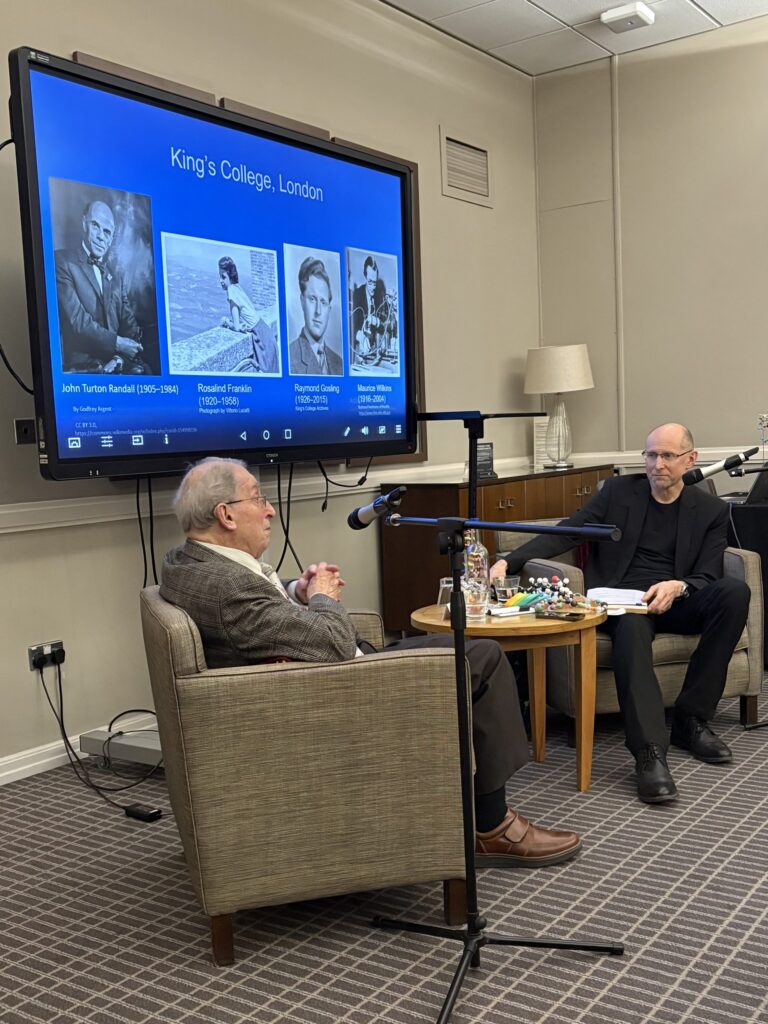Ah, it’s just not quite as catchy a lyric, is it? But I would so love to think that similar scenes of jubilation erupted on streets of #Leeds back in 1915 to celebrate the award of the Nobel Prize in Physics to father and son team William & Lawrence Bragg for their invention of X-ray crystallography, & again in 1952 for Nobel in Chemistry to Archer Martin & Richard Synge for their development of partition chromatography – both of which unravelled our understanding of #insulin & #DNA! Thanks to the Clothworkers Company of London for inviting me to talk on this subject last week….and also, well done to #LUFC!!! The crowds and Kaiser Chiefs may well have sung ‘I predict a riot ‘ yesterday, but as for today, I predict an awful lot of sore heads across West Yorkshire…
Posts
Rubbing Shoulders With Giants – the Scientific Odyssey of Prof. Tony North
In 1913, after working for long hours in a freezing cold laboratory on Woodhouse Lane, Leeds, father and son physicists William and Lawrence Bragg made a ground-breaking discovery for which they received the Nobel Prize in Physics two years later. Their development of X-ray crystallography, a method which uses the scattering of X-rays to reveal the atomic arrangement of crystals, not only transformed our understanding of matter but also opened up an exciting new field of research in which a generation of young scientists went on to make a name for themselves.
One of these was Professor Tony North (seen below) who, early in his career, was part of a groundbreaking team that successfully used this method to reveal the structure of lysozyme – the first enzyme ever to have its 3D molecular shape solved.

In a conversation hosted by Leeds Phil and Lit earlier this year, Tony shared his recollections of this memorable journey, recounting his role in pioneering the application of computing to solving biological structures (which has today led to powerful tools such as the Nobel Prize-winning AlphaFold), as well as the distinguished people he met along the way, several of whom – such as Max Perutz and Dorothy Hodgkin – won Nobel Prizes for their work in this field. Tony’s story which, alongside cutting edge science such as X-ray crystallography and biocomputing also involved a crucial trip to Hamley’s toy shop in London all in the service of science…can be heard here.
What Has Wool Ever Done For Us…?
Apart from clothing us, weaving a path to unravelling structure of DNA & helping forge the science of molecular biology??? Looking forward to hearing Monica Stenzel from the Centre for History and Philosophy of Science at the University of Leeds explain all this eve in her talk ‘Fuzzy Logic: History of Wool Science in Leeds’ to the Thoresby Society
https://www.ticketsource.co.uk/thoresby-society?mc_cid=d19c875f2d&mc_eid=ac35265fcd
Litterbag Sisyphus
Sisyphus and his boulder have become something of a theme of late – whilst writing about him for new book on the discovery of DNA that I’ve been working on, it struck me that all the volunteers in our area of Leeds who go out on a regular basis and pull discarded drinks cans and bottles from hedges to fill bulging purple bags as part of Leeds City Council’s #LitterFreeLeeds scheme face a similar Sisyphean task. Inspired by this thought, I had a little play on an AI image generator, and here’s what it came up with…
